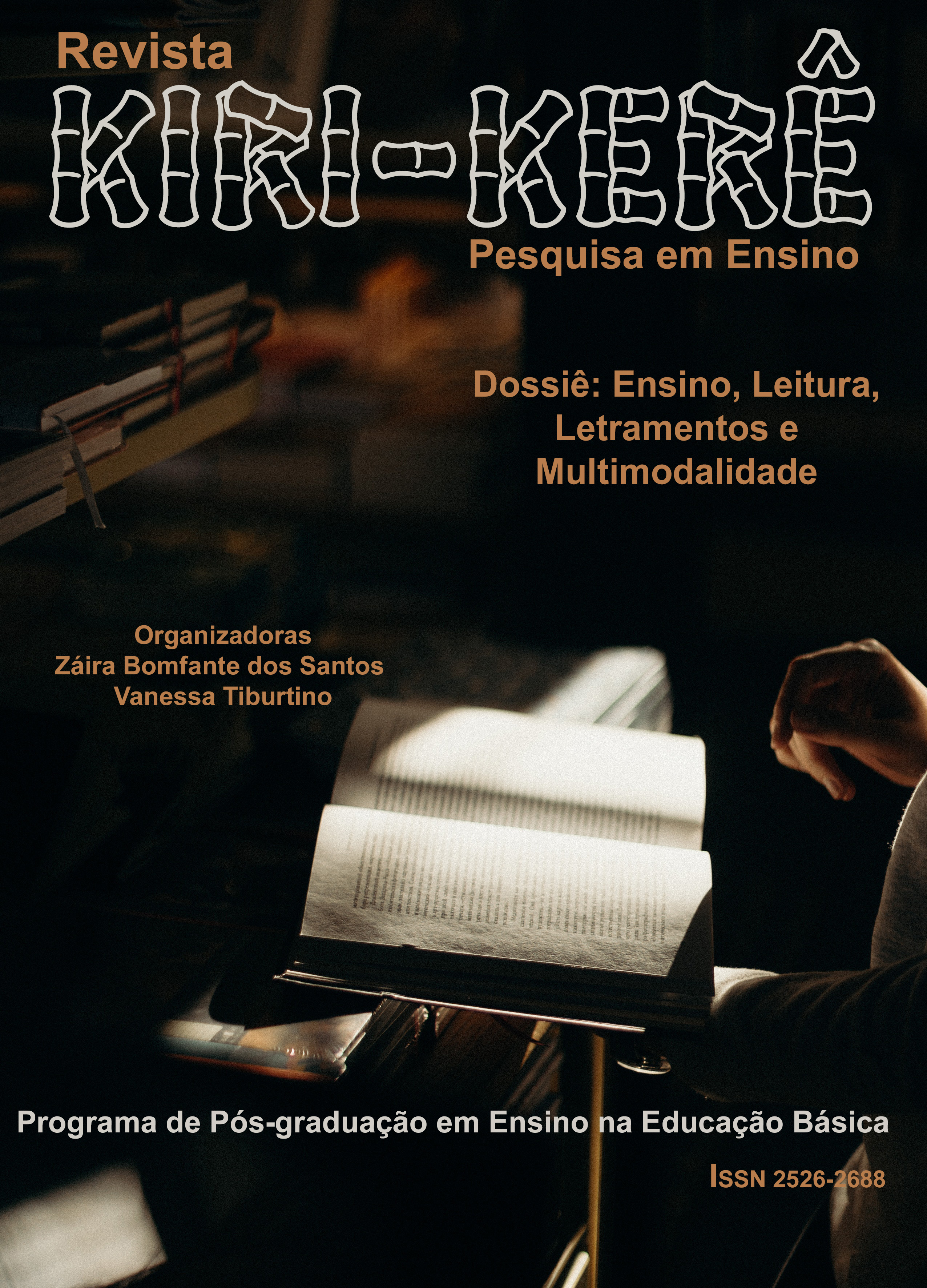(Res)Significando as práticas docentes na educação infantil sob a ótica da multimodalidade:
o uso de história verbo-visual como ferramenta didática
DOI:
https://doi.org/10.47456/krkr.v1i8.37977Keywords:
Multimodality, Childhood Education, Visual Literacy, Teaching and LearningAbstract
The present article aims to investigate the relationship between the insertion of multimodal texts and the development of the reading process and (re)production of images in a Childhood Education class in the literacy phase, in a school located in the rural area of the municipality of XXXX, state of XXXX. Thus, it is important to consider the ideas proposed by Koch and Elias (2013), the Grammar of Visual Design (KRESS; VAN LEEUWEN, 2006[1996]) and the composition of Visual Space (PAINTER; MARTIN; UNSWORTH, 2014). We start from the idea that, even before writing, the student is already able to establish a reading of the world around him/her. Therefore, the multimodal reading used as an aid in enhancing knowledge about the language to active reading training can minimize probable future problems of students at advanced levels of schooling (Final Years and High School) in relation to their interaction with multimodal texts and their handling. The research corpus is composed by multimodal texts produced by students, considering the Portuguese language educational proposal of the municipality. Therefore, this work has an exploratory and qualitative character. The results demonstrate a satisfactory development of early childhood education students in relation to understanding and textual interpretation from the work with the verbal-visual text, in order to enable a productive visual literacy among students.
Keywords: Multimodality. Childhood Education. Visual Literacy. Teaching and Learning.
Downloads
References
ALMEIDA, D. B. L. Do texto às imagens: as novas fronteiras do letramento visual. In: PEREIRA, R. C. M.; ROCA, M. del P. (org.). Linguística aplicada: um caminho com diferentes acessos. São Paulo: Contexto, 2017. p. 173-202.
BEZEMER, J.; KRESS, G. Multimodality, Learning and Communication: a social semiotic frame. New York: Routledge, 2016.
BRASIL. Ministério da Educação. Base Nacional Comum Curricular (BNCC). Brasília: MEC. 2018. Disponível em: http://basenacionalcomum.mec.gov.br/. Acesso em: 20 jan. 2021.
FREIRE, P. A importância do ato de ler: em três artigos que se completam. 51. ed. – São Paulo: Cortez, 2011.
HALLIDAY, M. A. K. An Introduction to Functional Grammar. 2nd ed. London: Edward Arnold, 1994.
HALLIDAY, M. A. K.; MATTHIESSEN, C. M. I. M. An Introduction to Functional Grammar. London: Edward Arnold, 2004.
JEWITT, C.; BEZEMER, J.; O’HALLORAN, K. Introducing Multimodality. New York: Routledge, 2016.
KOCH, I. G. V. Desvendando os segredos do texto. São Paulo: Cortez, 2002.
KOCH, I. V.; ELIAS, V. M. Ler e compreender: os sentidos dos textos. São Paulo: Contexto, 2013.
KRESS, G.; VAN LEEUWEN, T. Reading images: the grammar of visual design. London: New York: Routledge, 2006[1996].
KRESS, G. Multimodality: a social semiotic approach to contemporary communication. London/New York: Routledge, 2010.
NASCIMENTO, R.; BEZERRA, F.; HEBERLE, V. Multiletramentos: iniciação à análise de imagens. Linguagem & Ensino, v. 14, n. 2, p. 529-552, 2011.
PERNAMBUCO. Secretaria de Educação e Esportes. Currículo de Pernambuco: Educação Infantil. Recife: A Secretaria, 2018. Disponível em: http://www.educacao.pe.gov.br/portal/upload/galeria/17691/CURRICULO%20DE%20PERNAMBUCO%20-%20EDUCA%C3%87%C3%83O%20INFANTIL.pdf. Acesso em: 27 mar. 2021.
PAINTER, C.; MARTIN, R. J.; UNSWORTH, L. Reading Visual Narratives. Image Analysis of Children’s Picture Books. Esquinox by PUBLIISHING, 2013.
ROYCE, T. D. Multimodality in the TESOL classroom: exploring visual-verbal synergy. TESOL Quarterly, vol. 36, n. 2, p. 191-205, 2002.
SANTOS, Z. B. dos. As considerações da Gramática do Design Visual para a constituição de textos multimodais. Revista Transdisciplinar de Letras, Educação e Cultura da UNIGRAN, Dourados/MS, v. 2, n. 12, 2010.
Downloads
Published
Issue
Section
License
The authors accept, when sending their works, the assignment of their copyrights.


